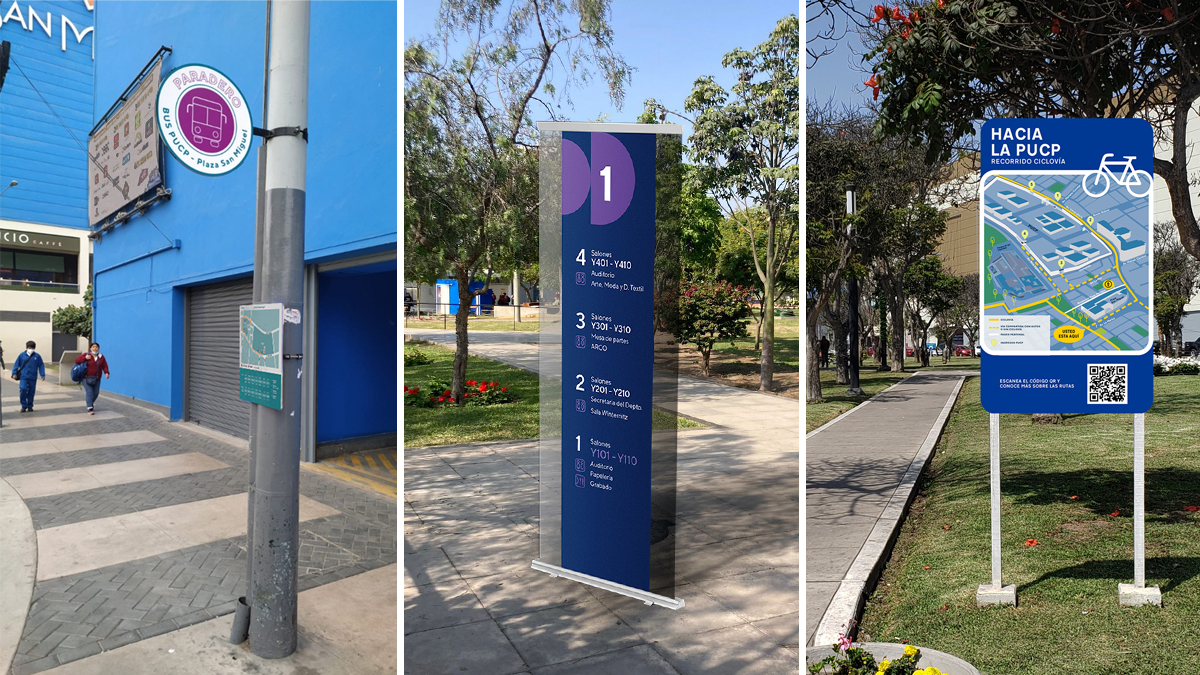
How could information design help to improve people’s quality of life? That was the starting point from which I decided to shape an elective course for graphic design students at the Faculty of Art and Design at PUCP (Pontificia Universidad Católica del Perú) in my hometown of Lima, Peru. This course was launched in August 2022.
After graduating from the MA in Information Design at the University of Reading back in 2016, I was thinking about how to share all that I learned in that time. In Peru it is generally thought that information design is only about infographics. Data visualisation is an underexplored topic and the term wayfinding is not widely known. I realised that it would be more helpful to give the student a broader perspective of design, showing how conveying information in a clear and effective way across a range of contexts can help users to make decisions, in order to improve their lives and society. In that sense, ‘Introducción al diseño de información’ (Introduction to Information Design) is a course that combines theory and practice to provide an overview of the systems, processes, methods, applications, and possibilities of information design. It is based on a user-centred approach, which aims to meet people’s information needs.
It is important to mention that in this teaching and learning process, the tutor is a facilitator who promotes an active and participatory role in the students. Theoretical materials and complementary readings are provided. Reflection is essential and is encouraged through activities such as seminars and portfolio techniques.
So what did students learn on this course? The topics included a brief history of information design, data visualisation, the infographic approach, information architecture, document design, and wayfinding. We looked at case studies to understand the importance of communicating information clearly through different seminars prepared by students. We also had an online talk by German Fernandez, a Peruvian information designer who lives abroad. Finally, we put into practice what we learned by researching and conceptualising a solution to a real and everyday information need.
The final outcomes were mostly digital interfaces. Students worked in pairs and addressed topics they were interested in such as mental health, time management, education, and spatial navigation. The process had discovery (user research), transformation and making phases. User testing was also required. The deliverables were a report, some high resolution mock-ups of the prototype and their context of use, and an oral presentation.
Some of the projects relating to wayfinding are listed below:
‘Hacia la PUCP’
A wayfinding proposal for a bicycle lane close to university.
Students: Cristina Dolores Alva Campos and Magdalena del Carmen Mansilla Hinojosa
They analysed the bicycle lane close to the campus because they realised that it was not fully efficient.
Wayfinding: Bus PUCP
A wayfinding proposal for the PUCP Bus service
Students: Camila Verónica León Carazas and Cynthia Yasmin Quispe Herrera
As regular users of the university bus service, they realised the signage was not working properly and should be redesigned.
Wayfinding FAD-PUCP
A wayfinding proposal for the Faculty of Art and Design PUCP
Students: María Fe Saavedra Palacios and Susana Maricielo Martinez Flores
The first motivation was to offer a map with the main highlights for the freshers students, but they eventually realised that their own faculty should be more user-friendly for first time visitors.
Curiously, students came from not only graphic design but also a range of different backgrounds such as product design, architecture, journalism, and mechatronics
engineering. Interdisciplinarity is the way ahead!
Moving forward, the course will be improved by including a new approach to tackle user-centred methods which can be seen as a complex topic. The use of a virtual portfolio as an assessment and reflection tool will remain, but it needs to be simplified to some extent in order to be more time efficient. In the future, I would love to have different information designers sharing their experiences and a jury for the final project.
Overall, it has been a positive experience so far. I am looking forward to continuing to grow the interest in information design among undergraduate students. Thank you to the Sign Design Society for giving me the opportunity to share this teaching experience with members.
Evelyn Nunez-Alayo
Contact: nunez.em@pucp.edu.pe
University: PUCP: Pontificia Universidad Católica del Perú